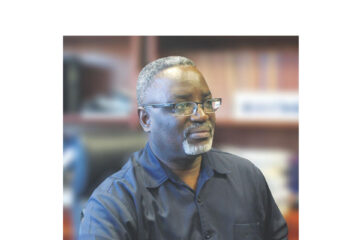Mandy Hattingh
Namibia is well known for its biodiversity and ecotourism appeal. Equally, its rich endowment of mineral resources has, for over a century, fuelled economic growth, infrastructure development, and job creation. As the government considers the Revised National Policy on Prospecting and Mining in Protected Areas and Other Environmentally Sensitive Areas, it does so at a moment that demands nuance and pragmatism.
This policy will test whether Namibia can meaningfully balance two cornerstones of its national identity: its global conservation standing and its status as one of Africa’s most stable, investment-friendly mining jurisdictions. Achieving this balance is both possible and essential if Namibia is to achieve its national targets around sustainable development and job creation.
In its current form, the draft policy sets out an ambitious framework aimed at preserving Namibia’s ecological wealth. It rightly acknowledges the need for long-term environmental protection, highlights international conservation targets, and proposes new tools to guide decision-making around land access. However, it also introduces a series of exclusions and requirements that may, if left unrefined, constrain the mining sector – the very sector that Namibia significantly relies on to fund its development goals.
For decades, mining and conservation have coexisted in Namibia. Uranium mining in the Namib-Naukluft National Park and diamond recovery along the Sperrgebiet coastline are but two examples of this coexistence. It’s noteworthy that roughly 75% of the country’s mining revenue comes from activities in or near protected areas. Rather than being mutually exclusive, mining and conservation have been proven (through regulation and responsible operatorship) to be mutually manageable.
It is this foundation on which the revised policy should be reconsidered.
Namibia’s broader economic blueprint, including Vision 2030 and the Harambee Prosperity Plan II, places clear emphasis on job creation, industrialisation, and economic diversification. Mining is central to all three. In 2024, the sector contributed more than 13% to GDP and supported over 20,800 direct jobs.
Under the current wording of the draft policy, large portions of land may be automatically excluded from mining and prospecting if they fall within broadly defined categories such as “high-value tourism areas”, areas with “potential” tourism value, or “areas with high-value species”. While the intention is commendable, the lack of definition, transparency, and process could introduce real uncertainty, ultimately deterring investment into the mining sector.
It is concerning that, under the draft policy, there is currently no formal mechanism for public consultation before land is excluded from mining or prospecting and no standard for appeal. This risks creating a fragmented regulatory landscape, one that operates outside existing legislation and may not be consistent with the Minerals (Prospecting and Mining) Act 33 of 1992 or the Environmental Management Act 7 of 2007. This misalignment risks eroding the investor-attracting certainty that Namibia has consistently demonstrated.
There are also technical issues that warrant public input. Requirements for closure plans at the earliest stages of exploration, for instance, may not be fit for purpose, particularly for low-impact activities. Imposing mine closure obligations at this point could stifle investment, limiting the very discoveries that future development relies on.
Another provision proposes that if an entity holding a licence in a protected area, or other area covered by the policy, is sold or changes ownership, the environmental clearance certificates (ECCs) in respect of that licence becomes void. This would upend ordinary commercial practice, where projects normally change hands throughout the lifecycle (often to secure financing, bring in specialised expertise, or transition from exploration to development). This proposal could delay or derail viable projects, costing jobs, discouraging investment, and increasing the administrative burden on regulators without added environmental benefit.
These concerns are not raised in opposition to the policy; rather, they are raised in support of its purpose. The best way to protect Namibia’s natural heritage is to develop a framework that encourages responsible investment, embraces regulatory clarity, and recognises the strategic importance of both conservation and mining. As already demonstrated, coexistence is possible and already achievable.
Namibia’s mining sector is evolving. With the rise in global demand for critical raw materials (especially those needed for the green energy transition), Namibia has an opportunity to position itself as a sustainable supplier of the future. To seize that opportunity, it needs a policy framework that protects the environment without paralysing a part of the economy.
Sustainable development is not about choosing one sector over another. It’s about enabling both to thrive in a way that benefits all Namibians. With the right policy framework, mining and conservation can coexist. A well-balanced approach will support job creation, environmental stewardship, and long-term economic resilience. If the revised policy is grounded in clarity, fairness, and collaboration, it can serve as a model for how Namibia meets its development ambitions while preserving the natural heritage that makes it so unique.
*Mandy Hattingh
Head of Energy, Director, NSDV Law
Attorney and Notary Public




